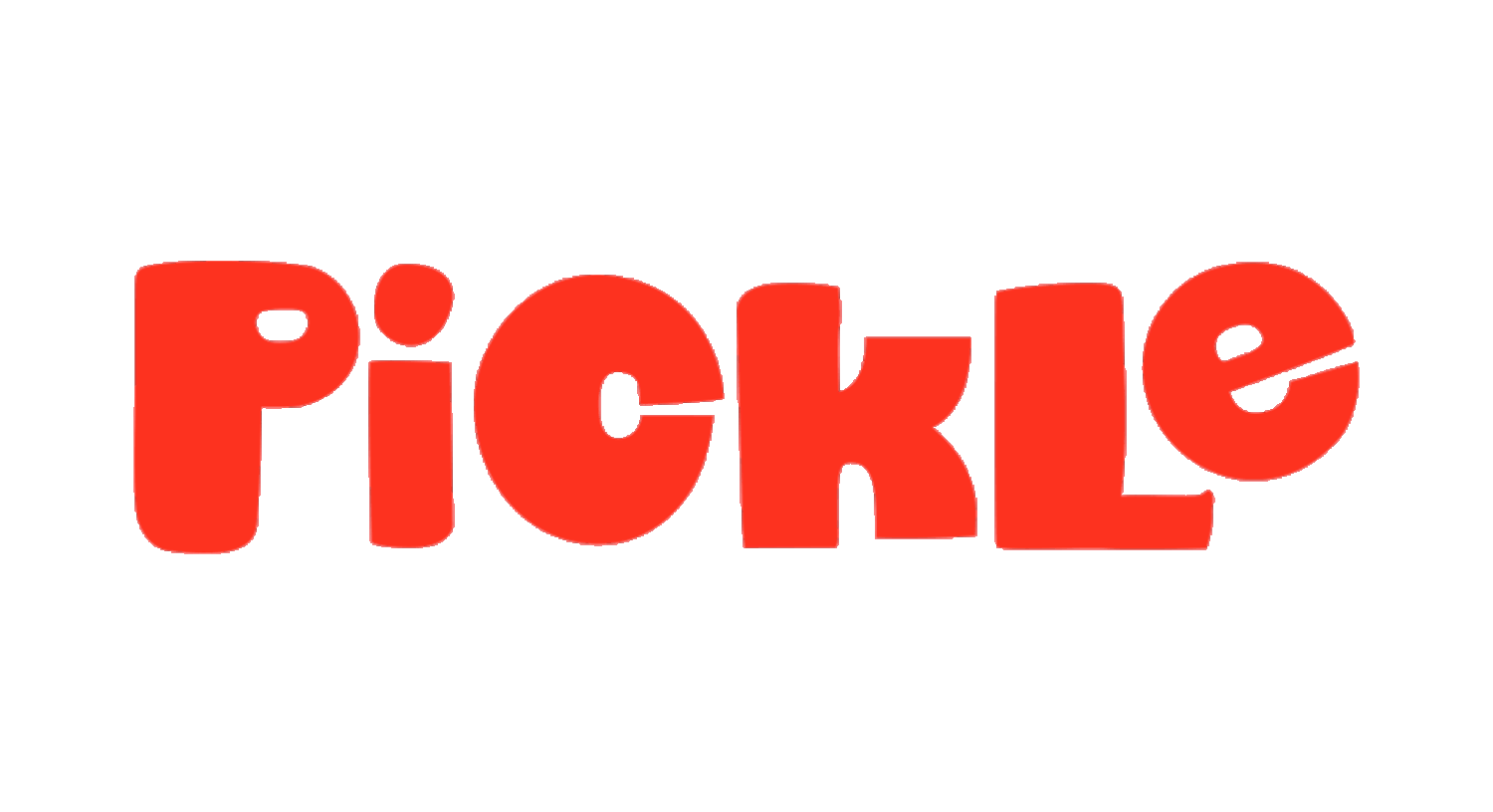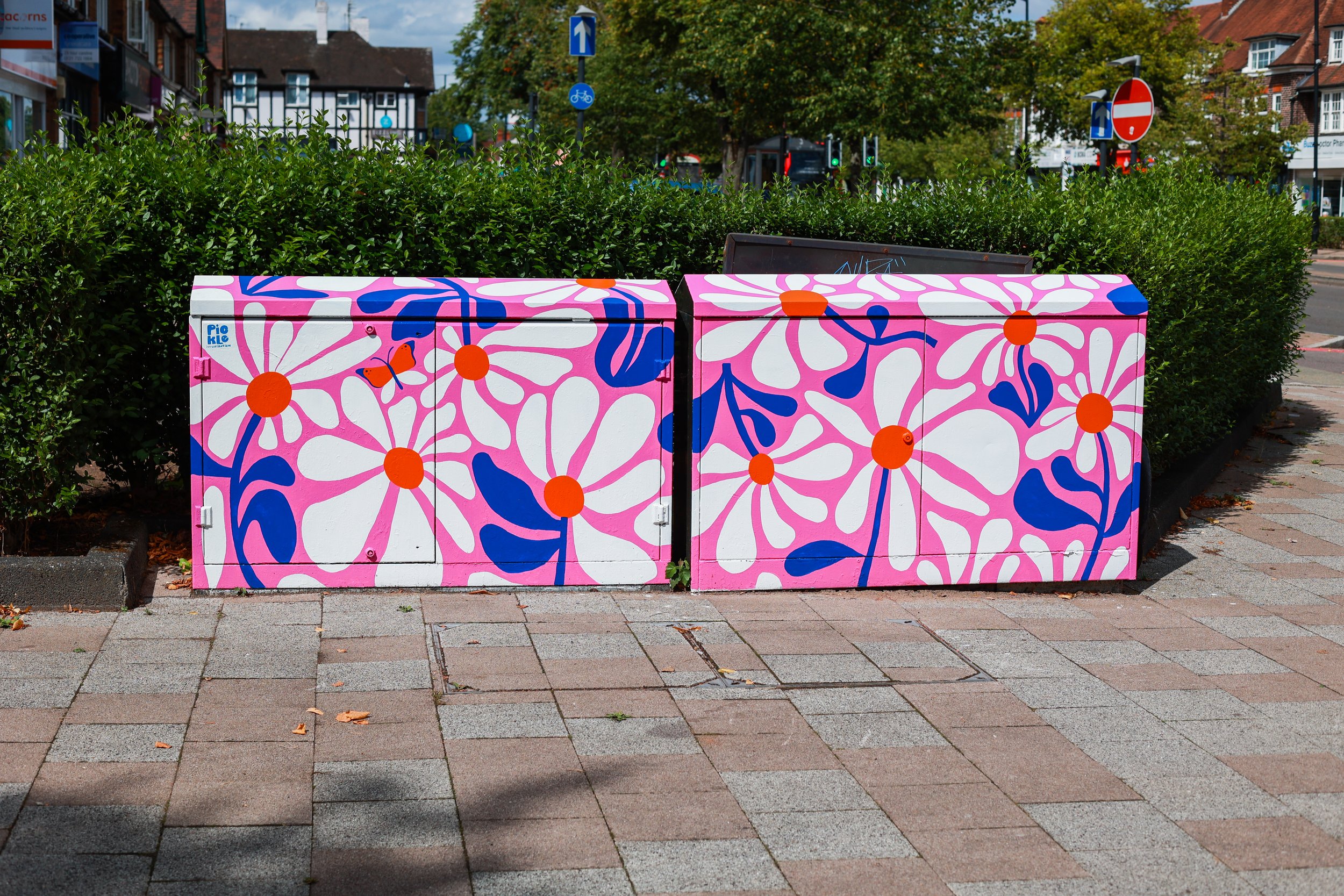Commissioning Painted Utility Boxes
Let’s break down the project we completed alongside Solihull Council where we were commissioned to paint 5 utility boxes along Shirley High Street. We’ll tackle some commonly asked questions about the commissioning process which will hopefully demystify and therefore encourage more similar public artworks!
Project Summary
Where? Shirley High Street
Why? Reviewing the goals set out in their economic strategy, Solihull Council decided the main driver for the work was to decrease graffiti tagging around Shirley, which is a prevalent issue. There was also an interest in increasing local pride and creating a visual identity in the area, building on the community activity as well as dwell time.
When? May-August 2022
What?- 5 Utility boxes- all approx 1x1m
Process
Select Boxes- The council identified which boxes were appropriate and found out which utility providers were linked to the selected boxes. From the initial online contact forms on the BT and Virgin Media websites, the specifications were that the boxes had to be painted, not vinyl wrapped- as well as being light colours due to the fear of them overheating. It helped having council backing for this step as opposed to a singular artist!
Write an Artist Brief- Building on Shirley's link to poppy island and daisy park, it was decided that the theme of the artworks would be wildflowers. The brief was then shared across multiple platforms as an artist call out. When writing briefs, it’s important to note that it needs to be clear with what you expect from the artist including dimensions of boxes, time frame and budget.
Artist Selection- Interviews with potential artists were held in front of a judging panel which consisted of The Shirley Ambassadors Group which included local businesses and community members such as a Solicitors firm.
Community Engagement-We decided that a successful way of including the public within the artwork was to create online polls deciding which mini-beasts should be included in the wildflower themed utility boxes.
Design- We worked with the council to design the boxes with two rounds of amendments offered and by July 2022 painting of the boxes got started.
Marketing Plan- It was important that the comms happened during the painting process, in real time, to gain momentum over the months that the project was playing out. This way the residents of Shirley would feel more connected and involved with the project. Within the first week, Cllr Karen Grinsell visited the painting of the boxes and a PR story was sent out. It was also no accident that the completion of the first 3 boxes coincided with the path of the Olympic Commonwealth torch parade which also added visibility and interest to the project.
Practicalities- During the painting process the illustrators worked with the council and the onsite street team to organise appropriate locations for washing brushes, moving the railings which protected the boxes when in progress and printing signs which explained to the public the permissions that were granted for the works to be made.
Painting- Planning for the painting process to be over the summer months was successful and the engagement with the public was overwhelmingly positive, both from conversations on the street as well as online comments.
Further Activity- To further build on the community's involvement, the hidden mini beasts within the artworks created the boxes into a trail. The creation of an activity pack was formed and circulated, welcoming families to the high street- a key goal for Shirley.
Time Frame
2 Months- Budget confirmed, permissions granted and formulation of artist brief.
2 Months- Interviewing Artists and deciding successful artists.
2 Months- Designing and Painting.
6 Months Total
Funds Required
3 Council Staff Members
Artists fees- £6,000+ Realistically approx £3000 needed per box but if doing multiple/a larger project discounts could be negotiated.
Usual council service fees to cover the time for parking and putting barriers out whilst the artists painted.
Key Advice
Community Engagement- Online opinion polls, workshops, onsite painting and discussions with the people who use the spaces is vital. The work needs to be impactful but not feel like its thrust upon a community which might not welcome it. Fundamentally, the community needs to feel like they have been seen, heard and represented through the artworks.
Marketing Plan- Another key learning was that a joined up marketing plan within departments and adjoining events, such as the commonwealth games, was key in the visibility of the project and propelled the excitement and engagement around the initiative.
Contacting Utility Boxes- When contacting the utility box providers, the process was a straightforward online form. The providers were on board with the project and were lenient with the council over what could be achieved. It has been said that this process was smooth due to the nature of the lead being a council. Local authorities might have a better time with the utility providers permitting the go ahead of the projects as opposed to sole artists applying without reliable sources behind them.
Weather- Planning these projects in for the summer months is vital to save time and budget.
Protecting the painting process- Having a plan to protect the artworks during the painting process is important. Barriers, posters explaining to the public the permissions granted, tarpaulin for covering the artworks at night/wet weather are all considerations which need to be organised. It’s also worth noting when deciding the boxes to paint, the location is accessible for the artists such as not too close to traffic, congestion or highly polluted areas.






